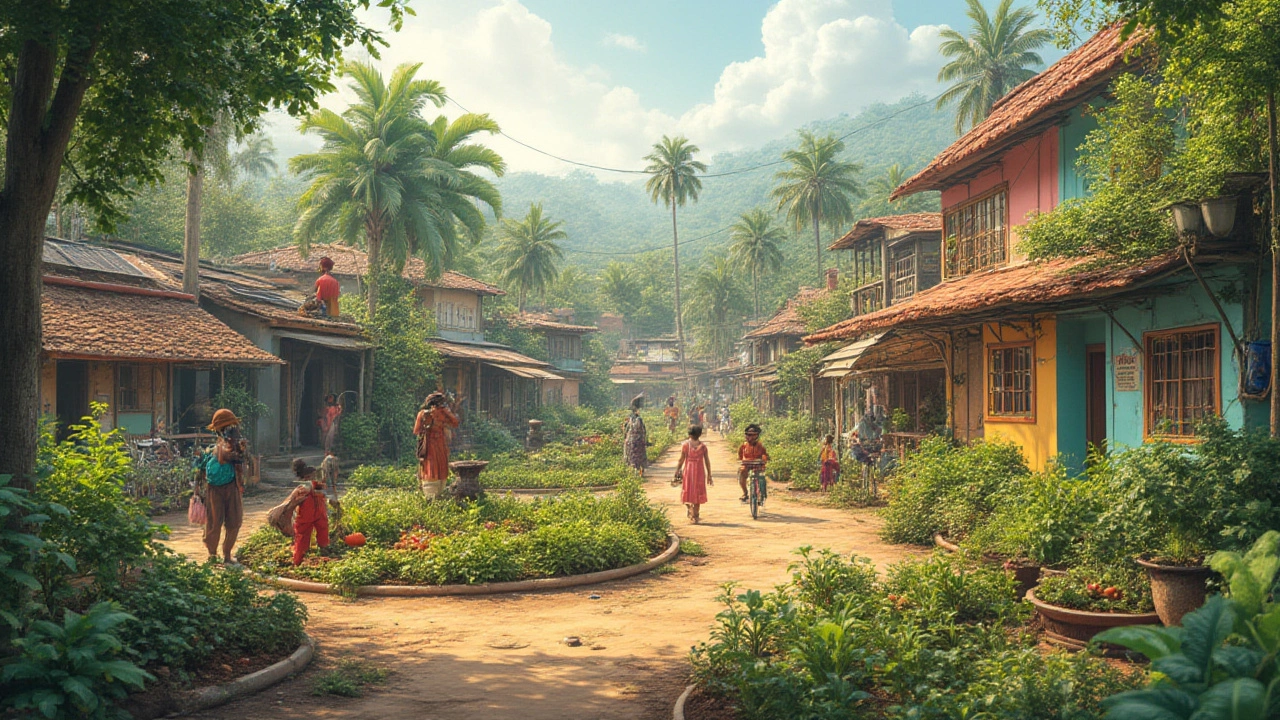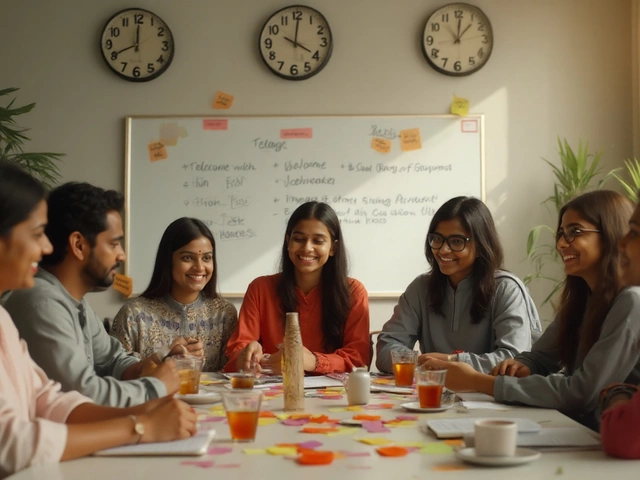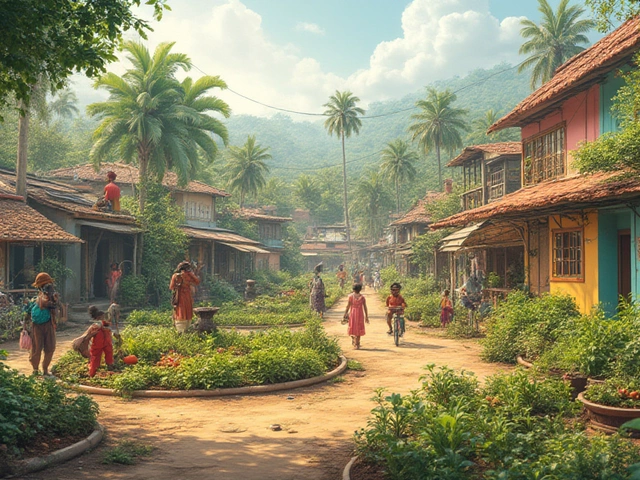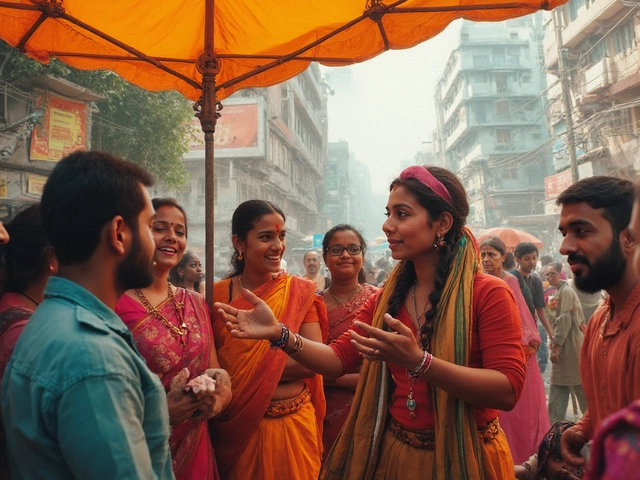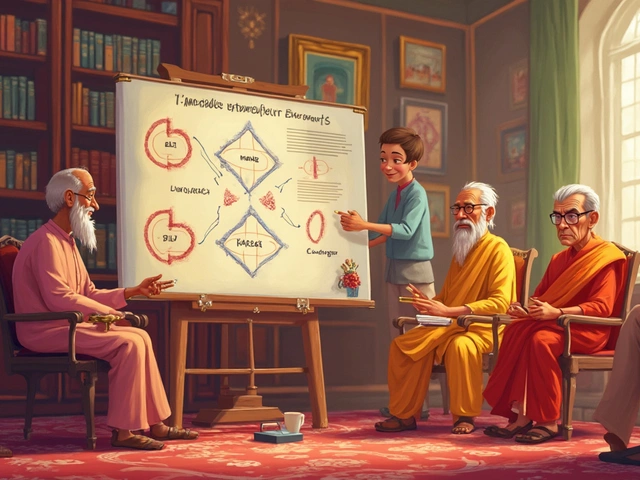The phrase 'green community' gets tossed around so much, it almost sounds like a buzzword companies use to sell bamboo loo paper. But there’s some real substance under the fluffy slogans – enough that entire neighborhoods (and even cities) are rethinking how people, nature, and systems interact. If you ever find yourself wondering if your local area is 'green,' or how you could help tip things that way, you’re not alone. In Wellington, some folks plan beach clean-ups after windstorms just for fun. Others think any street with a few trees counts. But behind the scenes, there’s a wild mix of innovative projects and surprising results, and some real science supporting the idea that community and environment must go hand in hand.
What Makes a Green Community?
So, what exactly is a "green community"? It’s not just about adding recycling bins or planting a few shrubs along the street (although, let’s be honest, a feijoa tree or two never hurts). At its core, a green community is a place where people intentionally work together to reduce their negative impact on the planet and boost their positive effects – for the long haul. The idea has roots in sustainability science, but it’s also about rolling up your sleeves and working alongside your neighbors. In Wellington, people share homegrown vegetables over the fence or help swap out old lightbulbs for energy-efficient LEDs.
Real green communities usually balance three things: environment, economy, and social well-being. That means protecting natural spaces, supporting local jobs and businesses, and making sure everyone has a healthy place to live. It’s not just nice theory. Take the case of Malmö, Sweden: their Western Harbour neighbourhood slashed carbon emissions by 65% within a decade, thanks to smart buildings, renewables, walkable design, and local buy-in. Then there’s Freiburg in Germany, where more than half the residents walk, cycle, or take public transport daily – with actual happiness levels creeping up, not down.
So, what does this look like day-to-day? Think solar panels on roofs, compost bins in community parks, car-share programs, beehives in school gardens, even neighborhood-scale renewable energy projects. Wellington city has set a goal to be zero carbon by 2050, and they’re not the only ones. In 2023, over 150 cities worldwide had committed to similar targets.
But it’s more than shiny technology. In the U.S., Portland, Oregon has backyard habitat programs where locals restore native plants and wildlife corridors, boosting both biodiversity and property values. In Singapore, government housing blocks have ‘green walls’ dripping with edible herbs. Auckland, New Zealand, has introduced stormwater gardens to catch rain and prevent floods.
The unspoken glue that holds all these together? Community involvement. Without trust and collaboration, even the best climate action plans stall. In Hamilton, New Zealand, a survey from 2024 showed residents were twice as likely to support big changes (like safer cycleways) if they felt they’d had a proper say in the process. So a 'green community' doesn’t just mean eco-friendly infrastructure – it depends on shared values and active engagement, too.
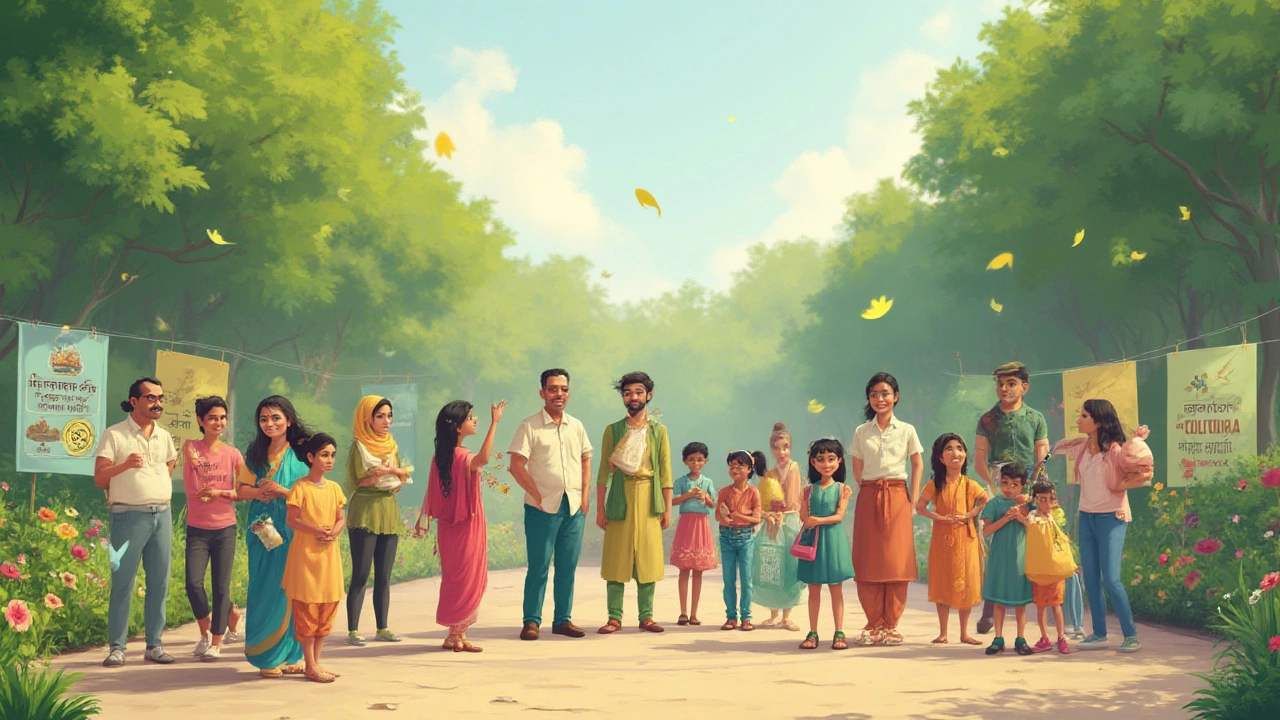
Benefits That Go Beyond the Environment
Living in a green community isn’t just about hugging trees (though I won’t judge you if you do). The perks go far beyond saving the odd kiwi bird or getting a whiff of fresh air in summer. Scientific studies have linked urban tree cover to lowered stress and better mental health. In Dunedin, a recent survey found residents with access to green spaces reported 21% higher satisfaction in daily life than those who didn’t. Can you imagine that impact multiplied across your whole hometown?
Let’s talk health. It’s no secret locals who walk or cycle everywhere are generally fitter, but the ripple effects are massive. Air pollution drops, leading to fewer asthma attacks. Gardens reduce urban heat, shaving electricity bills and even cutting hospital visits during hot spells. According to a 2022 report from the World Health Organization, cities that invest seriously in green infrastructure see clear reductions in heart disease and obesity rates over a decade. When kids play in shared gardens and parks, they develop social skills and immune systems – fewer colds, more friends.
Now, let’s get real: money matters. Green communities often see property values go up faster than similar areas without eco projects. Businesses tend to thrive because locals buy more locally-made goods and food – shops in Wellington’s Cuba Quarter stocked more regional produce once their market became pedestrian-friendly. Add efficient public transport, and families save big on petrol and car expenses. In Germany’s Vauban district, residents cut average car use by 60% just by making the streets friendlier for walking and bikes.
Social ties really matter here, too. Green community projects break down barriers. Let’s say your neighbor Tom keeps bees, and you start a compost bin for your apartments. Suddenly you’re chatting regularly, sharing homemade honey and swapping tips. Small-scale, yes – but it builds resilience for harder times. People who know each other well look out for one another after storms and during blackouts – in Christchurch, neighbors pooled resources and checked on elderly residents during the 2011 earthquakes, something made easier by their existing, environmentally-rooted community networks.
Plus, involvement helps people feel less powerless. I still remember the look on Griffin’s face when we built a rain barrel in our yard – the sense of 'we can do this' was contagious. No surprise that, according to a Victoria University study, Kiwis who take part in environmental actions report higher life satisfaction scores by at least 14 points from the national average. Working towards a common purpose is a natural antidepressant.
| city | Major Green Initiative | Year Started | Change in Emissions/Health |
|---|---|---|---|
| Malmö, Sweden | Eco-Neighbourhood (Western Harbour) | 2001 | 65% reduction in CO2 (2015) |
| Freiburg, Germany | Car-light Urban Development (Vauban) | 1998 | Heart disease down 12% (2020) |
| Wellington, NZ | City Carbon-Neutral Target | 2020 | 8% drop in city emissions (2024) |
| Portland, USA | Backyard Habitat Certification | 2006 | +23 bird species (per suburb avg) |
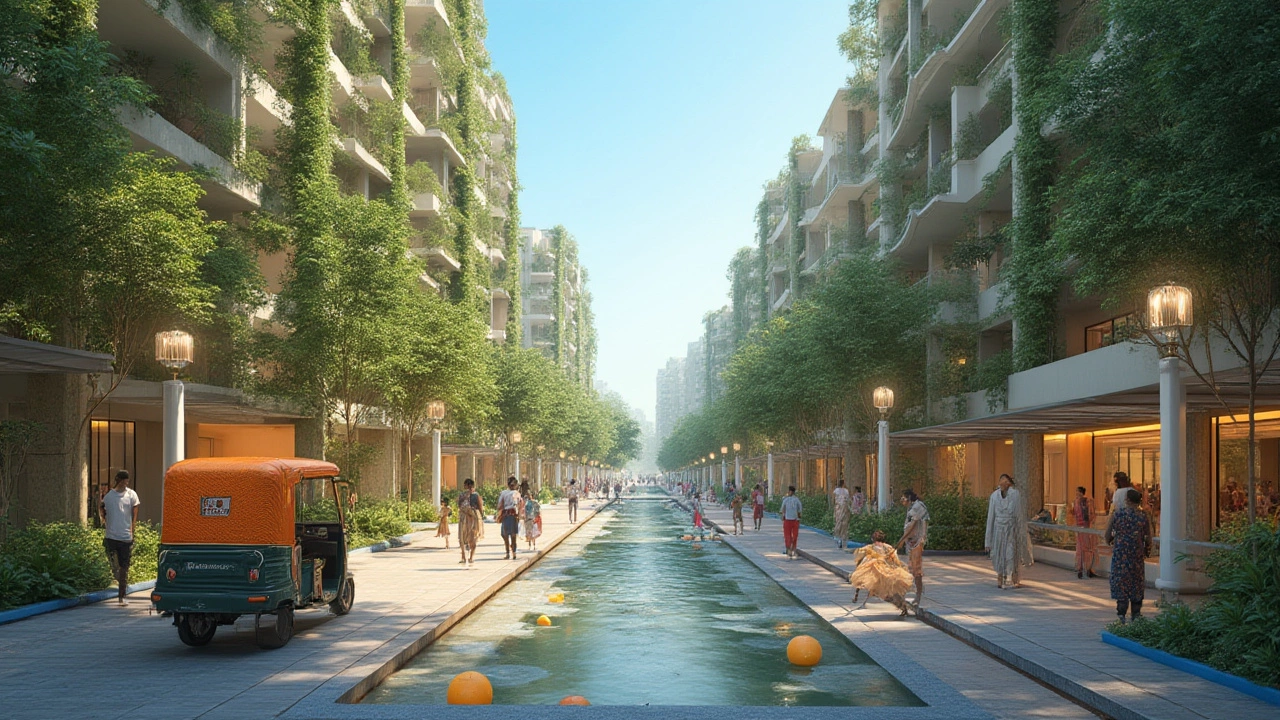
How Regular People Build Green Communities
If you think only city planners or billionaire tech founders can build green communities, guess again. Most of the change starts in homes and small groups, not in some fancy council office. Want your place to be more eco-friendly? It’s as simple as swapping how you do things and teaming up with others who care. Here’s how people everywhere are making it happen.
- Shared transport: Carpool apps and community car-share schemes cut traffic and slashed emissions in Wellington by almost 12% in four years. If just half your street walked, biked, or shared rides once a week, that lowers the local carbon footprint in a noticeable way. Even one person ditching their car for a few errands helps.
- Food: Community gardens. They’re not just about tomatoes and silverbeet – they unite neighbours, offer cheap veges, and give new immigrants a way to meet people. The award-winning Kai Garden in Dunedin runs seed swaps, gardening workshops, and free produce days every month. Growing even a few herbs on windowsills gets folks talking (and keeps basil fresher than any from the shop).
- Waste: Local repair cafes and swap days have cut landfill use in Kapiti Coast by up to 3,850 kilograms a year. Fixing a kettle or swapping clothing instead of tossing it is simple, and the conversations you have are just as valuable as the things you save.
- Energy: Solar panel co-ops get neighbours bulk discounts on equipment and installations so more homes tap into clean power. In Tauranga, late adopters even got help from early solar users to install panels, proof it’s about people power, not just money.
- Nature: Planting natives, pulling weeds, even making peace with the odd tui taking over your back yard (and your fruit) – it all helps biodiversity recover. The Zealandia eco-sanctuary in Wellington only works because volunteers patrol, plant, and educate new visitors week after week. You don’t have to save the kaka on your own, but you can support a project nearby.
You don’t have to join every group or march in every parade. Start where you are. One person’s weekly litter pick can inspire a street. A single letter to the council helps push for more bike lanes. If you have kids, show them how to compost or take them tree planting – research shows kids exposed to community greening keep those values as adults. People often underestimate how much small acts matter. They’re like yeast in bread – invisible at first, but absolutely essential to making a shift rise.
Don’t stress if your area isn’t zero-waste or 100% solar-powered. Even cities recognised as global leaders started with simple changes by small groups. Every green community is, at heart, a never-finished project. There’s always something new to try, someone new to involve, or a barrier you help bring down. You won’t always see instant results. Still, if you look around – in Wellington, Berlin, Portland, anywhere – you’ll notice that some of the happiest, healthiest, and most creative places are the ones that decide it’s worth the effort to grow green, together.
